
Capsules are one of the most common dosage forms in the medication and supplement world. They can hold powders, oils, liquids, herbal extracts, probiotics, and many other formulations. But manufacturers don’t just pick a capsule and go. The shell material, structure, and filling method all influence cost, stability, appearance, and how well the product works.
If you’re creating a new product or upgrading an existing one, it helps to understand the main types of capsules and where each one fits best. Here’s a quick overview to help you compare your options.
What Is the Function of a Capsule?
Before jumping into the types, let’s figure out what capsules actually do. Most of them share the same core functions:
- Every capsule has a soluble outer shell that holds the ingredients.
- The shell shields the contents from light, air, and moisture.
- It masks any unpleasant taste or smell from the active ingredient.
- Capsules provide accurate, single-dose delivery of the contents.
- Both the shell and the fill may include excipients.
- With specific materials, many support modified or targeted release.
- They come in many standard sizes and can be colored to tell products apart.
What Are the Different Types of Capsules?
Capsules are a flexible dosage form. There are several ways to classify capsules. Manufacturers often look at them based on how they’re built, what they’re made of, what goes inside, and how the contents are released.
💊 Capsules by Structure
When we talk about capsule structure, we’re referring to the physical design of the capsule itself. It’s also the simplest way to tell them apart because you can identify the differences just by looking at them.
Hard Shell Capsules
These are the familiar two-piece capsules. A hard shell capsule, often just called a hard capsule, has a shorter cap and a longer body. Its firm shell is usually animal-based or plant-based. Manufacturers love hard capsules because they’re versatile. You can fill them with solids, semi-solids, liquids, oils, and even combinations of these.
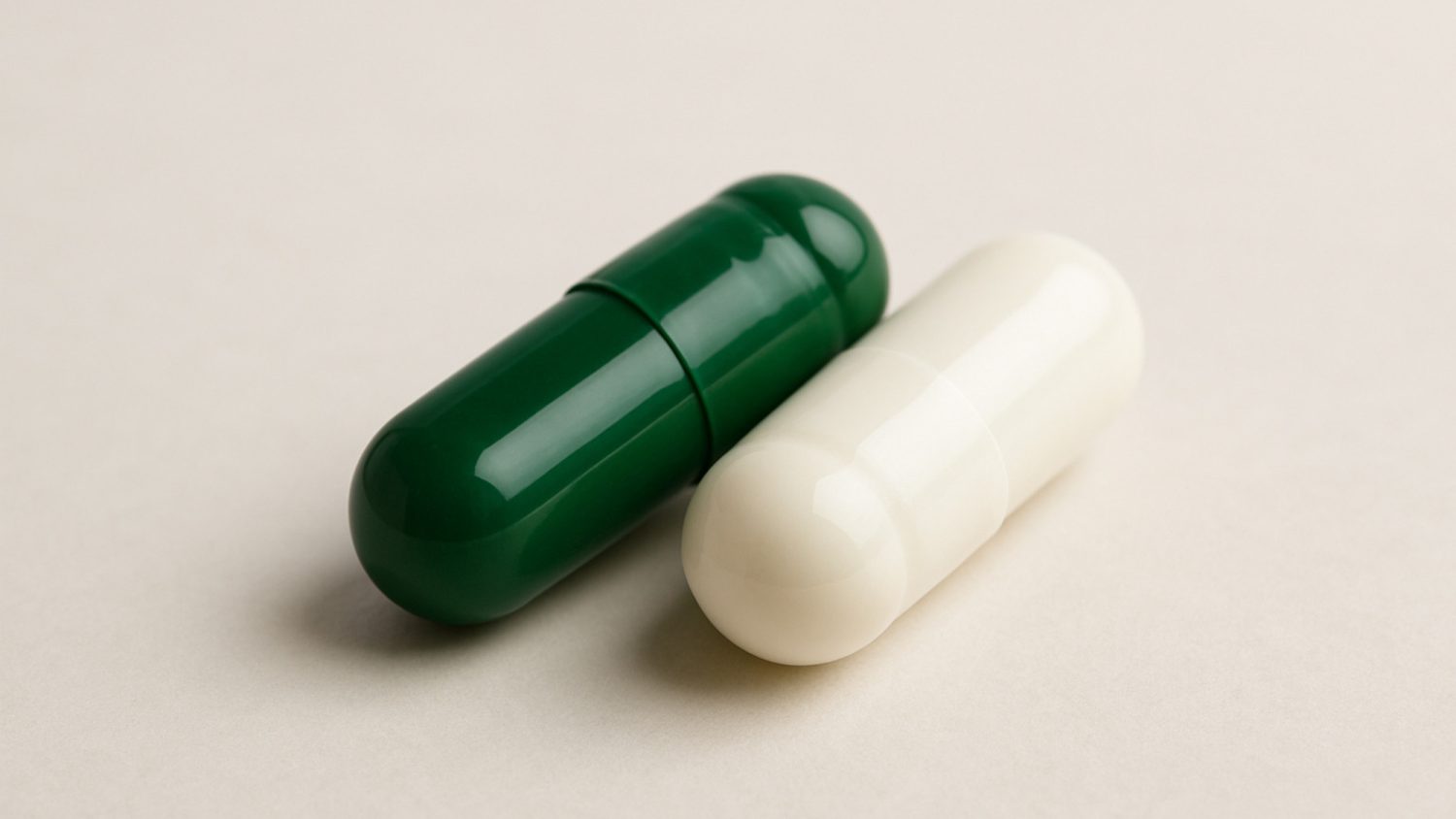
Hard capsules are widely used for medicines and supplements. They make your production simpler. You can buy empty capsules in bulk, and then separate and fill them with your formulation on most capsule filling machines.
Soft Gel Capsules
Softgels are single-piece capsules. Unlike hard capsules, they have a softer, more flexible shell. Due to the unique airtight structure, they’re ideal for liquid and oil-based fills. If you’re dealing with fish oils or other fat-soluble formulas, soft gel capsules are usually your friend.
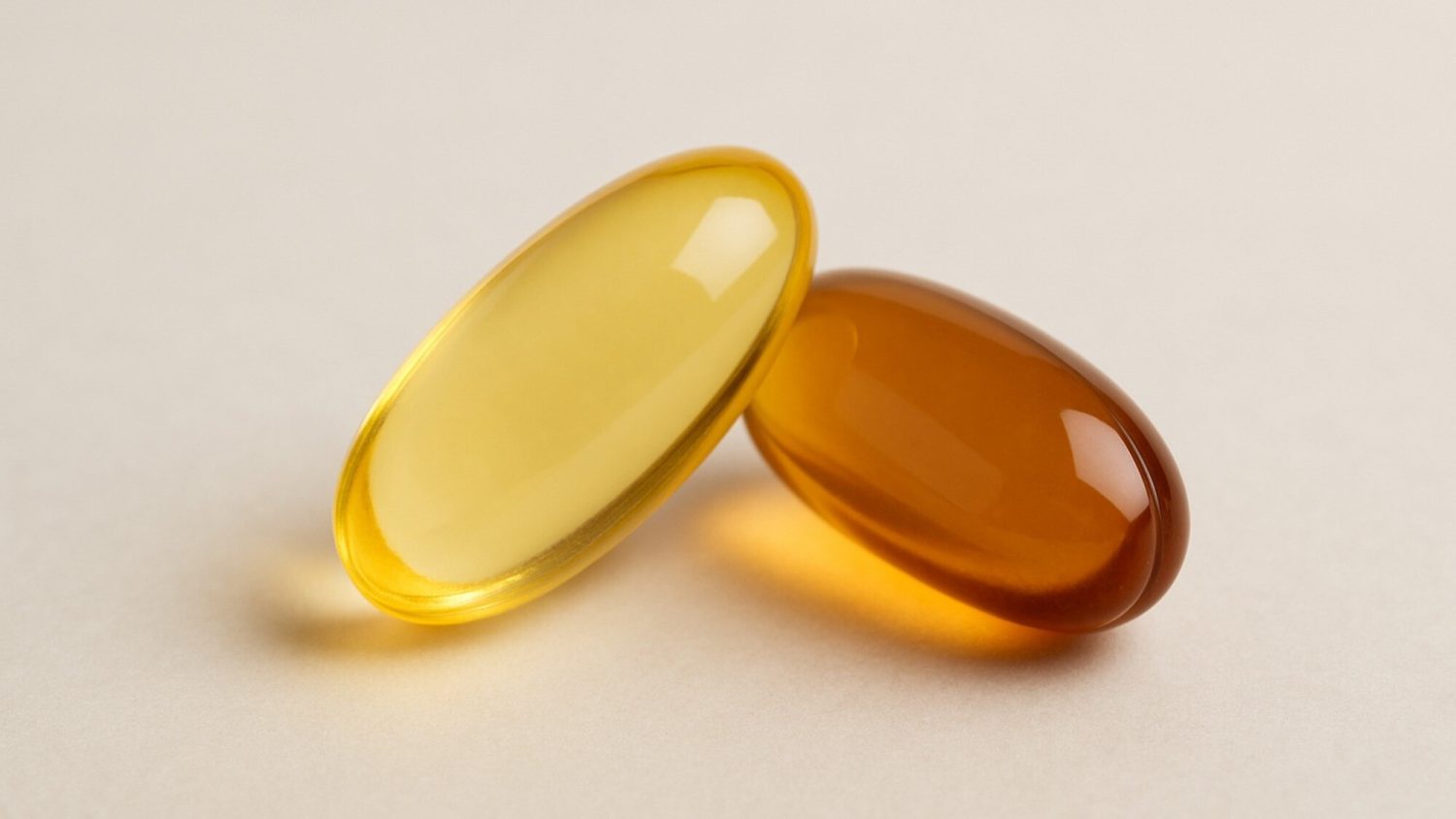
Soft gel capsules can’t be produced on standard capsule fillers. They’re formed, filled, and sealed in one step, which calls for specialized equipment and a more complex manufacturing process. Plus, they’re usually used for sensitive or premium ingredients. All this makes softgel products more expensive than those in hard capsules.
💊 Capsules by Shell Composition
Another common way to categorize capsules is by the material used to make the shell. As mentioned earlier, capsule shells are generally either animal-derived or plant-based. They are called gelatin capsules and vegetarian capsules in technical terms.
Gelatin Capsules
Gelatin is a dominant, traditional material for the capsule shell. It’s derived from animal collagen like bovine or porcine, and sometimes fish. Gelatin creates a smooth shell that’s easy to dissolve in the body.
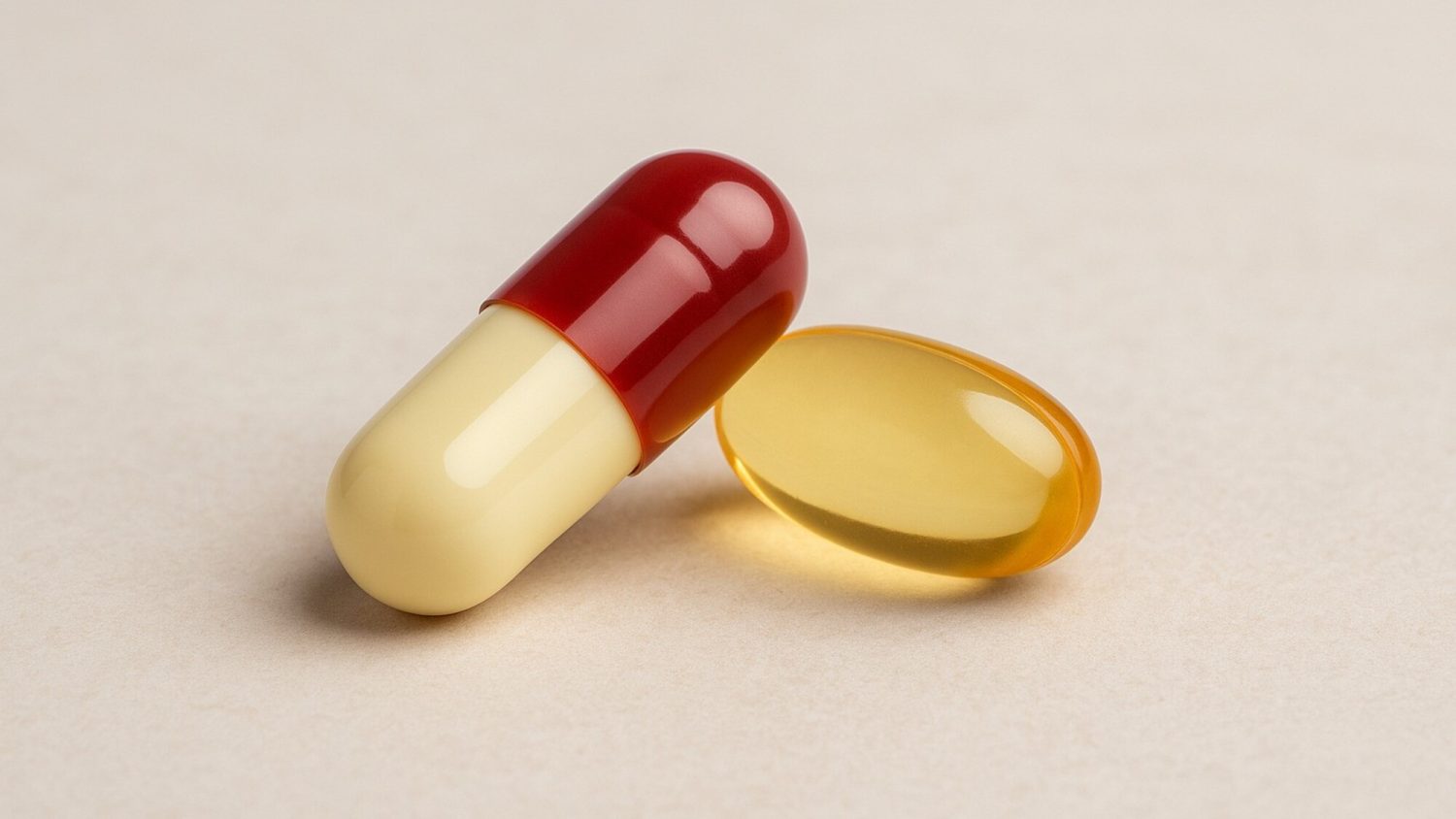
The shells of most hard capsules and softgels are made of gelatin. Gelatin capsules have been around for over a century and are widely available and affordable. That’s why they work with so many different dosage forms. But note that they’re not suitable for vegan or certain religious markets.
Vegetarian Capsules
The shell of these capsules is completely plant-based with no trace of animal ingredients. The most common materials are HPMC and pullulan.
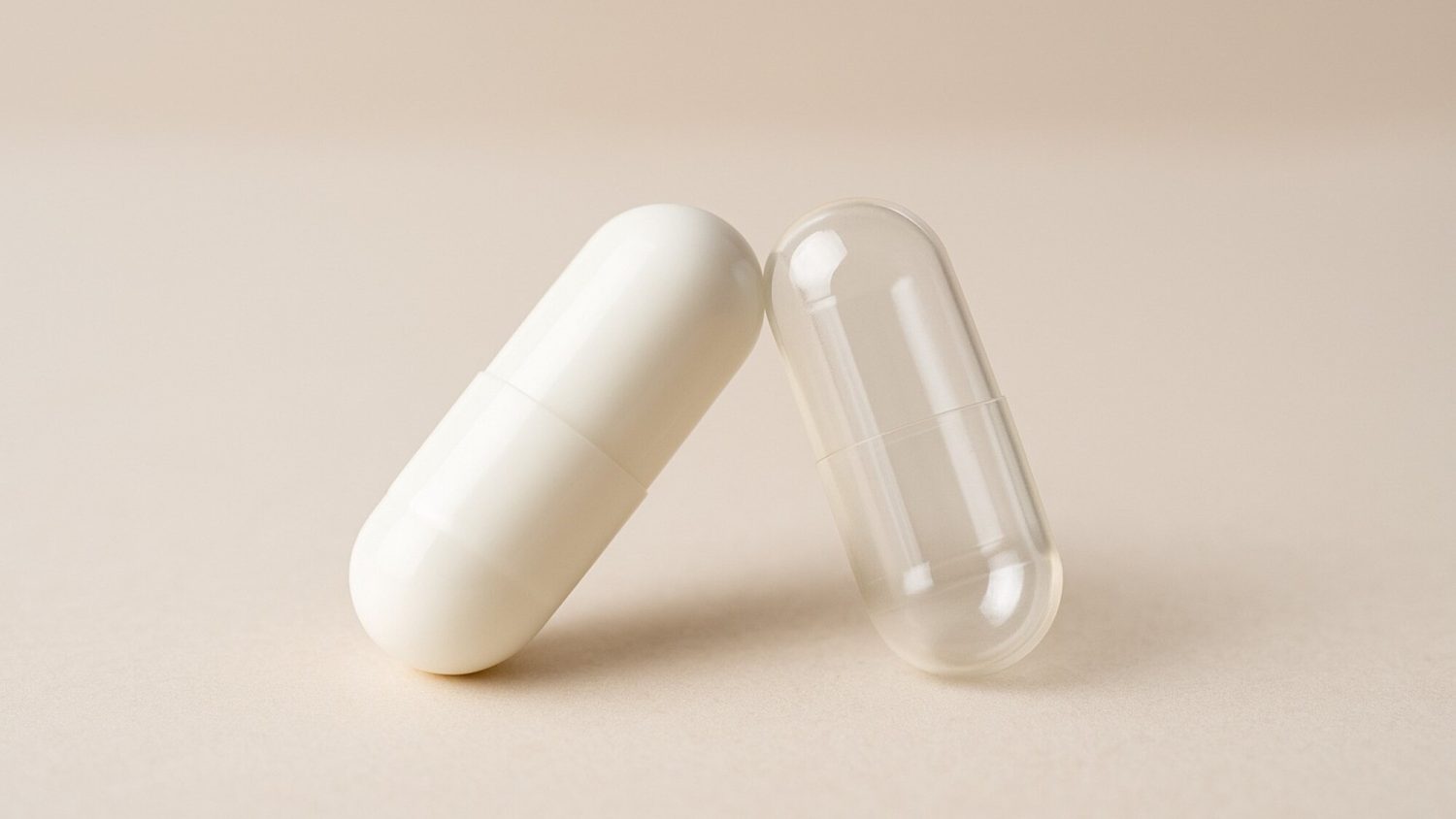
To help you decide, here’s a side-by-side comparison of HPMC vs pullulan capsules.
| Feature | HPMC Capsules | Pullulan Capsules |
| Source | Plant-based cellulose (wood pulp) | Polysaccharide from fermented tapioca starch |
| Appearance | Opaque white or tinted | Naturally clear and glossy |
| Barrier Performance | Good moisture protection but lower oxygen barrier | Superior oxygen barrier for oils and probiotics |
| Moisture Content | Low | Slightly higher but still stable |
| Temperature Stability | Highly stable; good for products in warmer climates | Good, but can soften in high humidity |
| Suitability | Powders, pellets, liquid fill | Probiotics, herbal extracts, moisture-sensitive fills |
| Market Use | Widely used in pharma and nutraceuticals | Often used in premium or clean-label products |
| Certification | Vegan, halal, kosher | Vegan, halal, kosher, USDA Organic certified |
| Cost | More affordable | Generally higher priced |
| Popular Industries | Supplements, herbal medicine, pharmaceuticals | Premium supplements, niche formulations |
Vegetarian capsules are a must if your product targets vegan, vegetarian, or religious dietary markets. In recent years, we’ve seen a big industry push toward plant-based capsule materials. Besides HPMC and pullulan, newer shell materials like starch and cellulose are emerging as eco-friendly alternatives.
💊 Capsules by Content Type
You can also group capsules based on what goes inside them. Different formulations call for different capsule designs.
Solid-Filled Capsules
This is the most common type. Nearly all hard shell two-piece capsules on the market are filled with powders, granules, pellets, or blends. The manufacturing is straightforward: you use a capsule filling machine to tamp or pour the solids into the capsule body, then lock the cap.
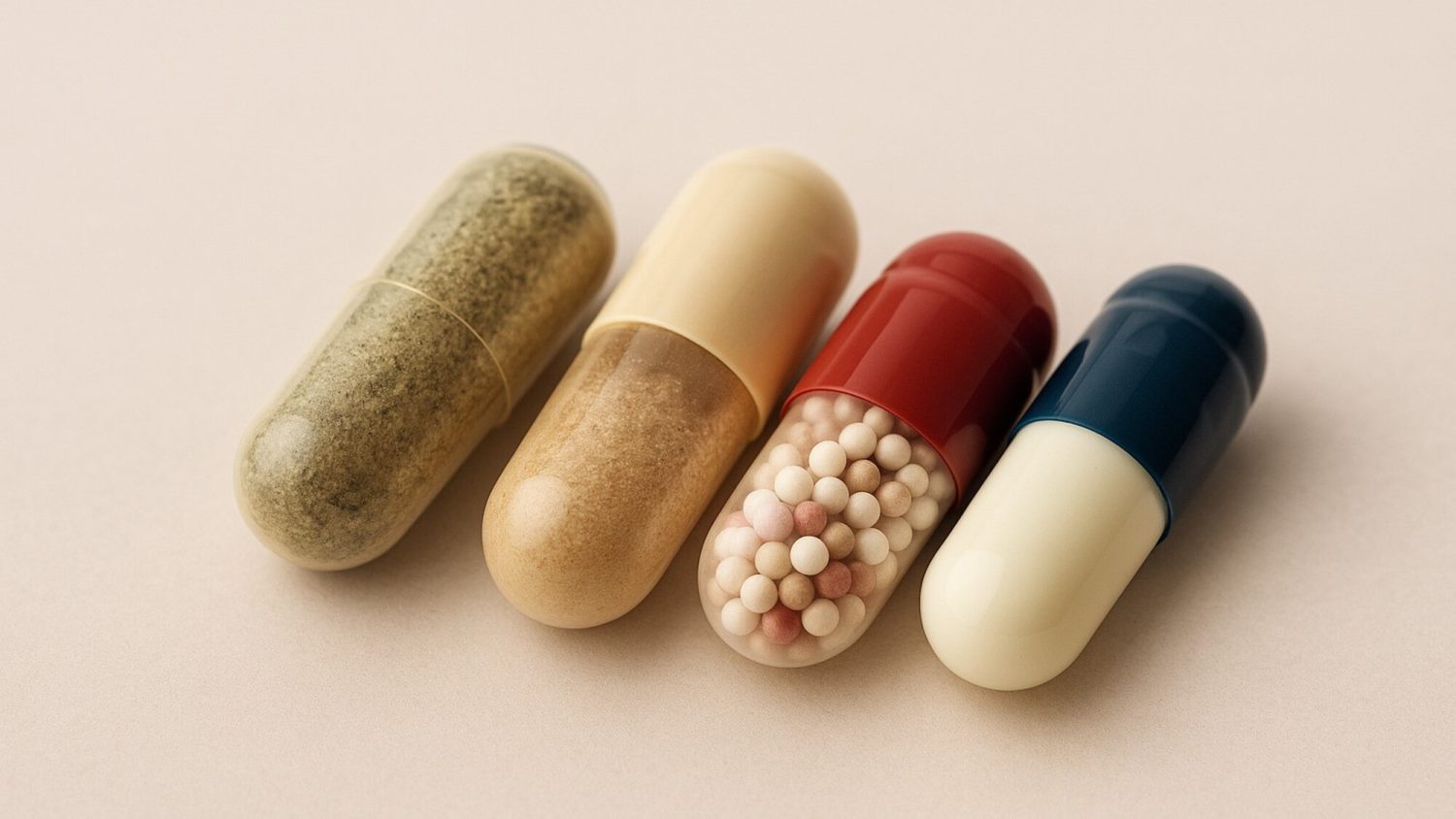
When your ingredients are stable and mix well, solids make an ideal capsule filling. Besides powders, granules, pellets, mini-tablets, or even small capsules inside a larger one all work too.
If you’re making this type of capsule, size selection matters a lot. Low-density solids might need a larger capsule. Very dense ingredients can fit into smaller ones.
Liquid-Filled Capsules
If your product is an oil, suspension, or other liquid, you’ll need a capsule for liquid filling. Soft gel capsules are often the go-to solution. As mentioned earlier, softgels are specifically designed to contain liquids. That’s why omega-3, vitamin E, and many CBD or hemp oils are sold as soft gel capsules.
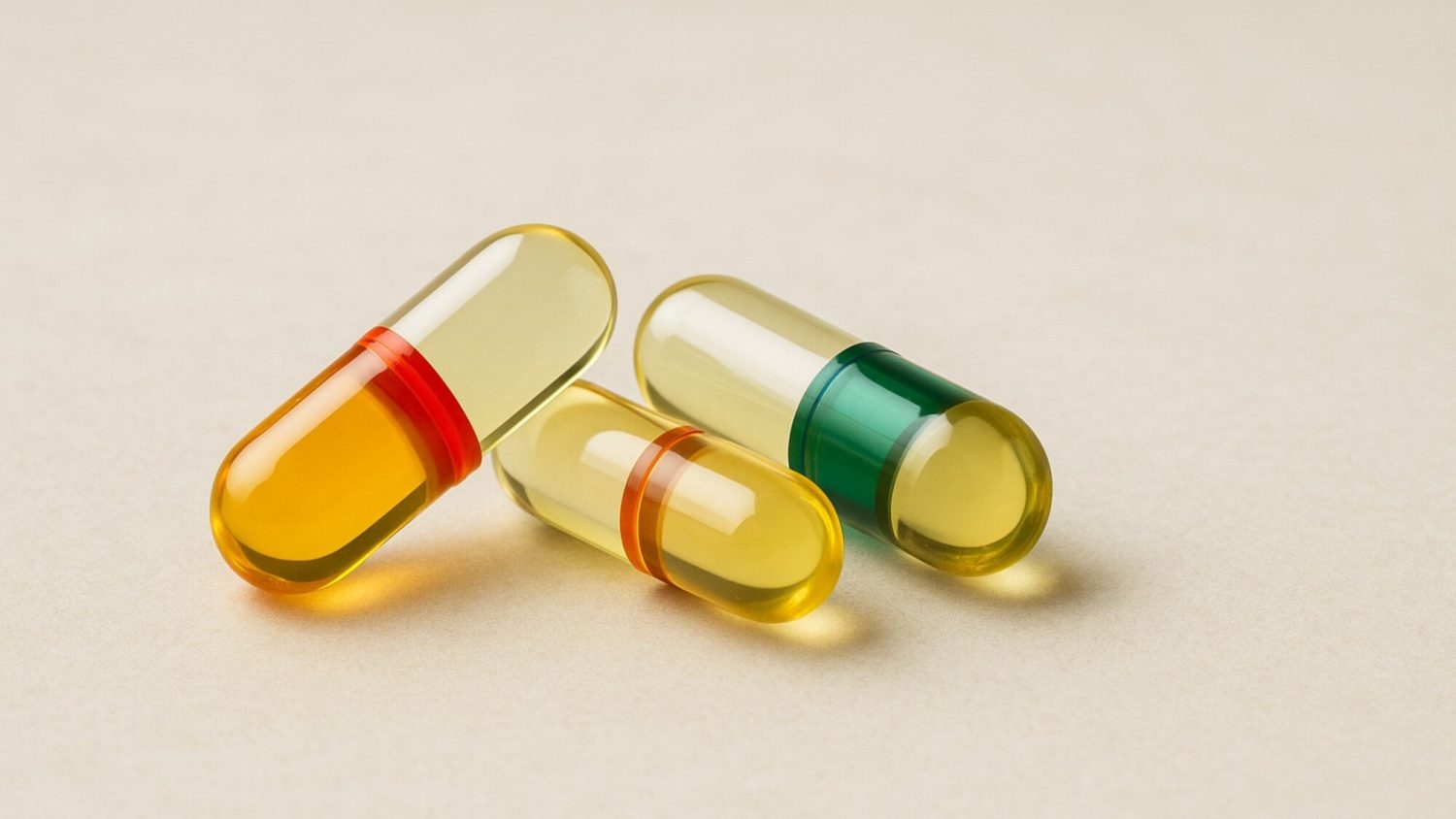
Liquid fills aren’t limited to softgels. Certain two-piece hard capsules can also do this job well. These capsules are usually made of gelatin or HPMC. They come in clear shells to showcase the contents. But unlike standard hard capsules, liquid-filled capsules need an extra sealing step. A colored gelatin band is applied to the joint between the cap and body to stop any leaking. And it’s worth noting that the liquid inside is usually non-aqueous, because a water-based formula would dissolve a regular gelatin shell.
💊 Capsules by Drug Release Mechanism
Lastly, capsules can be categorized by how and when they release the active ingredient in the body.
Immediate-Release Capsules
Most standard capsules are immediate-release. As soon as the capsule reaches the stomach, it dissolves and releases its contents quickly. The full dose is made available for absorption right away. For example, a daily multivitamin or a pain reliever capsule is typically immediate-release.
Delayed-Release Capsules
These capsules are formulated to hold onto the contents for a while before releasing. They’re usually enteric-coated and dissolve in the small intestines rather than the stomach. The concept is similar to immediate-release capsules, except the release happens in a different spot. The goal is to protect either the stomach from the drug or the drug from the stomach. You’ll see this format used for some probiotics, enzymes, and drugs like aspirin and certain anti-inflammatories.
Sustained-Release Capsules
These are also called extended-release or controlled-release capsules. The active ingredient is absorbed slowly over an extended period, like 8 to 24 hours, rather than all at once. Compared to immediate-release or delayed-release versions of the same drug, sustained-release capsules allow consumers to take fewer doses throughout the day.
Advantages and Disadvantages of Capsule Dosage Forms
Capsules have long been favored as a dosage form for their many benefits, but they do come with a few drawbacks. Before choosing a capsule type, it’s smart to look at both the pros and cons.
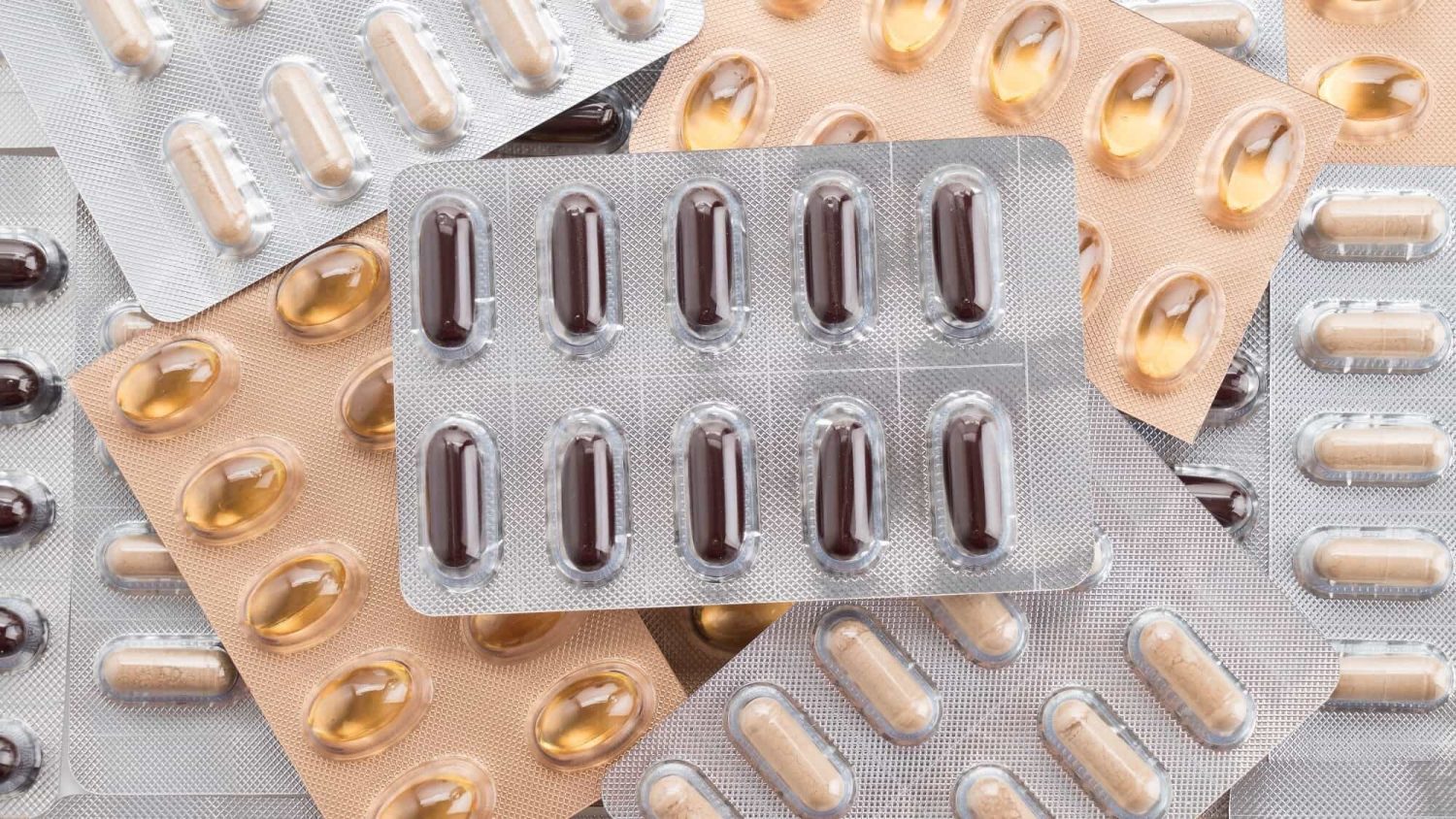
Advantages of Capsules
- Easy to Swallow & Taste Masking: Capsules are generally smooth and easier to swallow than tablets. The gelatin and HPMC shells hide the unpleasant tastes and odors of the ingredients inside. This makes dosing more comfortable, especially for children and people sensitive to taste.
- Fast Disintegration & Absorption: Capsules, especially softgels, often start working fast because the shell dissolves rapidly. Because soft gel capsules carry the active ingredients in liquid form, they can be absorbed more efficiently and speed up the onset of action.
- Precise Dosing & Wide Fill Options: Whether solid or liquid-filled, each capsule is a pre-measured, unit dose. This helps ensure dosing accuracy. You can fill capsules with powders, granules, pellets, oils, herbal extracts, mini tablets, or even a mix of these formats.
- Less Irritation: Certain capsules are designed to be gentler on the gastrointestinal tract. For example, an enteric-coated capsule can delay release so the contents bypass the stomach and dissolve in the intestines. And because capsules dissolve fully, there’s nothing left behind that can get stuck in the throat.
- Flexible Release Profiles: Capsules adapt to different delivery needs. They can be made for immediate, delayed, and sustained release. This allows the formula to be released at the right time and in the right part of the body.
- Tamper Evidence: That colored band on liquid-filled capsules doesn’t just seal the cap and body. It also makes tampering much more noticeable. And softgels are even more secure because they’re made as a single, sealed piece.
Disadvantages of Capsules
- Environmental Sensitivity: Gelatin capsules are sensitive to temperature and humidity. In very dry air, hard shells can dry out and crack during filling. In damp conditions, they absorb moisture and become soft. High heat can also make them soften or melt. Softgels may stick or even start to leak.
- Limited Dosage Capacity: Capsules come in standard sizes. The amount of powder you can pack into a capsule is limited. You may need to take multiple capsules to achieve the same dose. Some consumers might find it inconvenient.
- Higher Cost: Capsules are generally more expensive to produce than tablets. The shell adds extra material costs. The manufacturing process is slower and more complex than pressing tablets. All of that leads to higher production costs.
- No Dose Flexibility: The powder inside a hard capsule is not meant to be divided. And softgels obviously can’t be split at all. That makes dose adjustments impossible. Tampering with the capsule can also increase the risk of dosing errors.
How Anxine Supports Different Capsule Types
We offer complete equipment solutions for producing all major capsule types. Below is a quick look at how the right machines ensure quality capsule manufacturing.
Caspule Filling Machines
The capsule filling machine is used to fill hard two-piece capsules. They’re available in manual, semi-automatic, and fully automatic models for different production scales.
| Machine Type | Key Features | Ideal For | Output Range (capsules/hour) | Anxine Equipment Example |
| Manual | Low-cost, simple to use, and easy to maintain. No power needed. | Small batches in pharmacies, R&D labs, or small facilities. | Up to 8,000 | 100-hole Manual Capsule Filler |
| Semi-Automatic | Blends manual operation with automated filling for improved efficiency. | Small to mid-sized production runs. | About 10,000-50,000 | Semi-Automatic Capsule Filling Machine JTJ-V Pro+ |
| Fully Automatic | Fully automates capsule filling and sealing. Offers the highest output and precision. | Large-scale manufacturing in pharma or supplement factories. | Around 25,000-450,000 | Automatic Capsule Filling Machine NJP-1200C |
Softgel Encapsulation Machines
Softgels are one-piece capsules filled with oils or semi-liquids, so they can’t be produced on a standard capsule filling machine like most hard capsules. A softgel encapsulation machine is what you need.
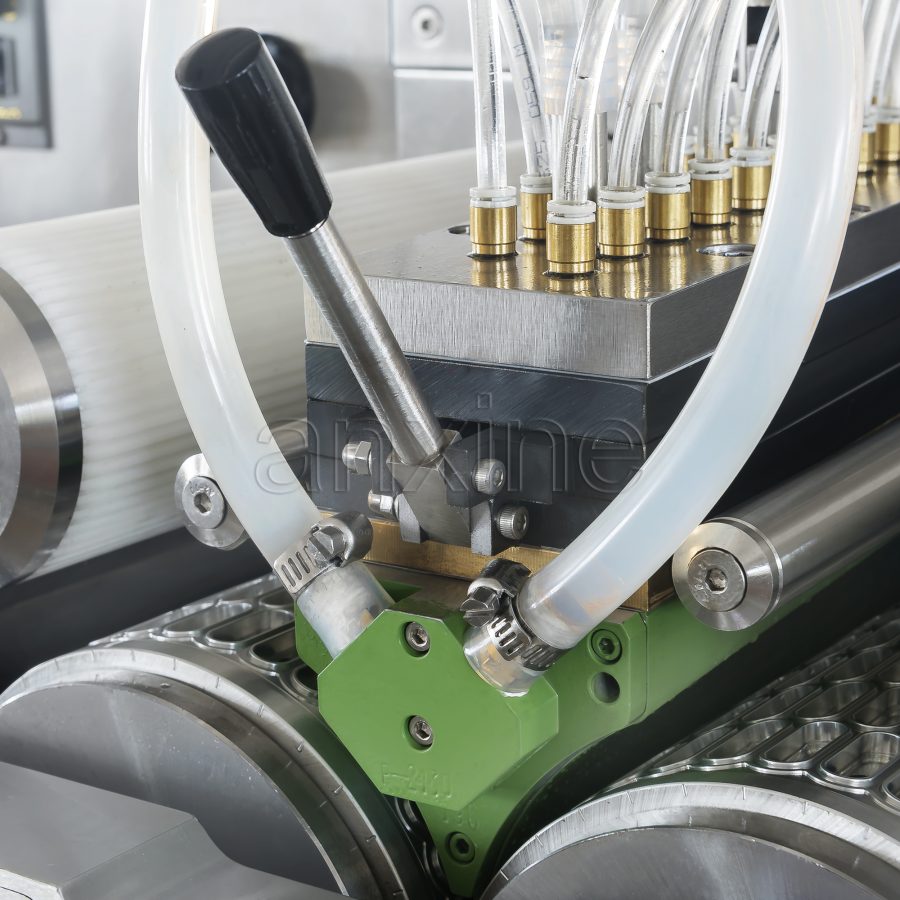
Take Anxine’s ASE-300C as an example. It can turn out up to 70,000 softgels per hour, which is ideal for small and medium-scale manufacturers.
Liquid Capsule Filling and Sealing Machines
What if you want to put a liquid product into a standard two-piece capsule? In that case, you’ll need specialized equipment. What’s special about this kind of capsule machine?
The process involves two main steps:
1. Filling the capsules with the liquid
2. Sealing them securely
A liquid capsule filling machine looks quite similar to those for solid filling. It typically has a pumping system to dispense precise amounts of liquid into each empty capsule shell.
Because liquid-filled capsules can’t be simply locked, a capsule sealing machine comes in. The sealing machine is connected to the filling system to complete the integrated process. It applies a small band of gelatin to tightly join the capsule cap to the body.